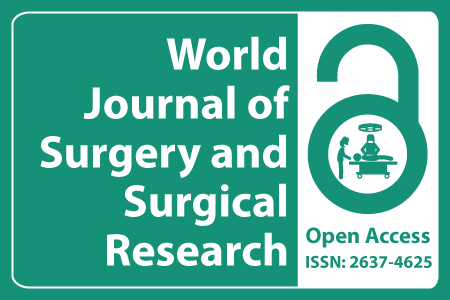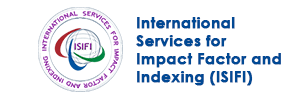
Journal Basic Info
- Impact Factor: 1.989**
- H-Index: 6
- ISSN: 2637-4625
- DOI: 10.25107/2637-4625
Major Scope
- Cardiac Surgery
- Colorectal Surgery
- Anesthesiology
- Trauma Surgery
- Gynecological Surgery
- Reconstructive Surgery
- Cardiothoracic Surgery
- Plastic Surgery
Abstract
Citation: World J Surg Surg Res. 2021;4(1):1309.DOI: 10.25107/2637-4625.1309
Appraisal of Pediatric Neurosurgical Outreach Missions in the Western Hemisphere
Rahul Jandiala1*, Pranay Narangb2, Jorge Daniel Brun Aramayoc3 and Michael Levyd4
1Department of Neurosurgery, City of Hope National Medical Center, Duarte, USA
2Halmos College of Natural Sciences and Oceanography, Nova Southeastern University, Fort Lauderdale, USA
3Hospital Del Nino, La Paz, Bolivia, USA
4Department of Pediatric Neurosurgery, Rady Children’s Hospital-San Diego, Encinitas, USA
*Correspondance to: Rahul Jandial
PDF Full Text Review Article | Open Access
Abstract:
Background: While a number of outreach missions have been designed and executed to improve
health care disparities in less developed countries, many of these efforts have been episodic with
visiting surgeons performing operations, with little attention to local surgeon education. To impart
real and durable advancement in surgical services in less developed nations, especially in specialties
that require emergent care, such as pediatric neurosurgery, it is critical to design outreach missions
with a didactic framework centered on improving the surgical armamentarium of local surgeons.
Methods: We propose a strategic design for enhancing the neurosurgical care delivered in institutions
in less developed countries during surgical outreach missions in the Western Hemisphere. Focused
on transferring modern surgical skills to local neurosurgeons, a selection criteria and structure for
the targeted missions is a derivative of logistical and pedagogical lessons ascertained by previous
missions by our teams in Peru and Ukraine.
Results: Medical outreach initiatives should be applied to hospitals in capital cities, which oftentimes
serve as central referral centers and are situated amongst a large population, for maximum impact
with fiscal efficiency. The host country should fulfill several criteria, including demonstration of a
significant need for neurosurgical support and equipment, geopolitical stability, and the presence
of academic neurosurgeons capable of learning advanced techniques and dedicated to providing
high quality care to indigent citizens. The neurosurgical outreach model should involve a series of
missions spaced out over a span of three to four years in which visiting and host surgeons collaborate
on increasingly complex cases, with progressive transfer of skills over time.
Conclusion: A strategic approach for surgical outreach missions should be framed around
collaboration and camaraderie between visiting and local neurosurgeons, with a mutual objective
of cost-effective targeted renovation of surgical equipment and the skill repertoire. Complementing
this design should be regular digital collaboration via video conferencing platforms in the years after
the missions to sustain the impact, further enhance the skill set of the host neurosurgeons, and to
allow visiting neurosurgeons to serve on standby in deeply complex cases.
Keywords:
Central and South America; Medical Missions; Neurosurgery; Pediatric Neurosurgery; Targeted Renovation
Cite the Article:
Jandiala R, Narangb P, Aramayoc JDB, Levyd M. Appraisal of Pediatric Neurosurgical Outreach Missions in
the Western Hemisphere. World J Surg Surgical Res. 2021; 4: 1309..













